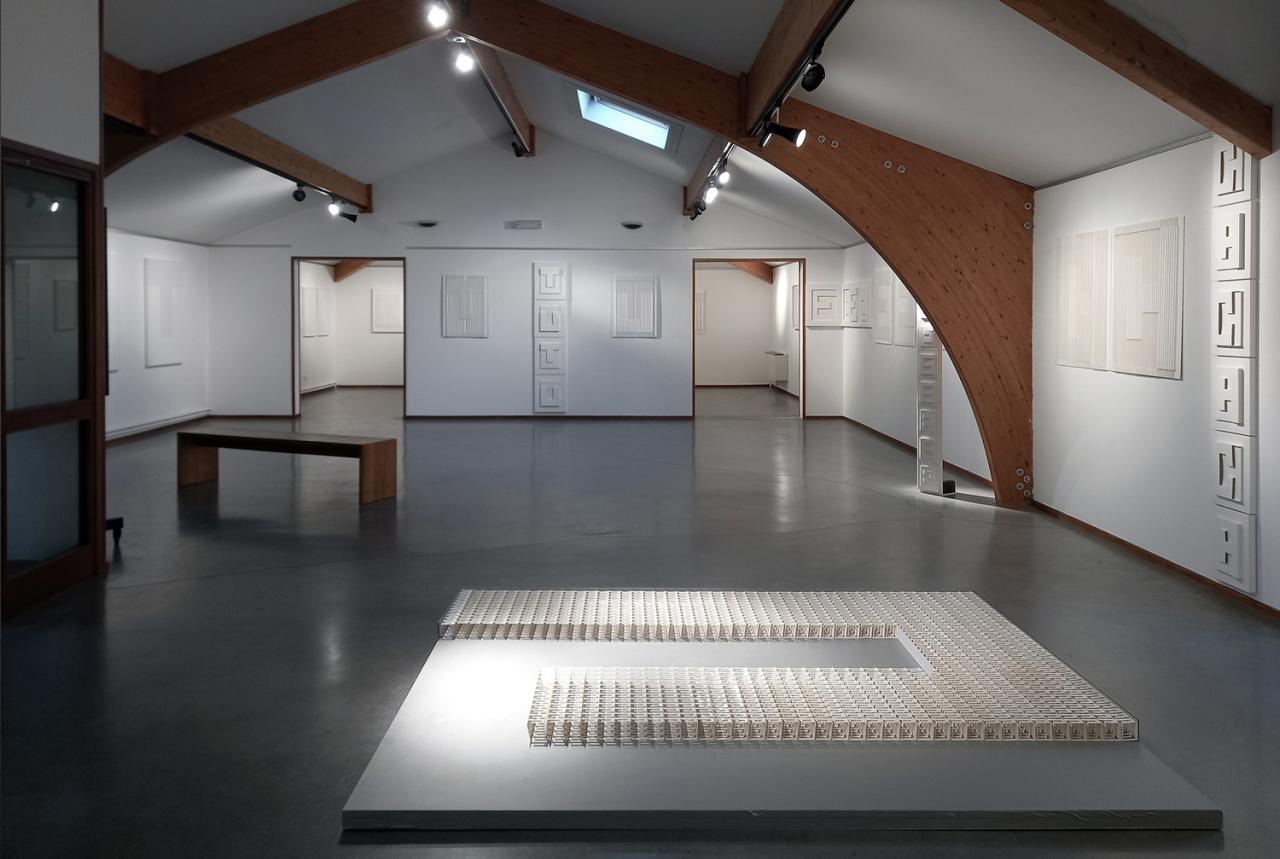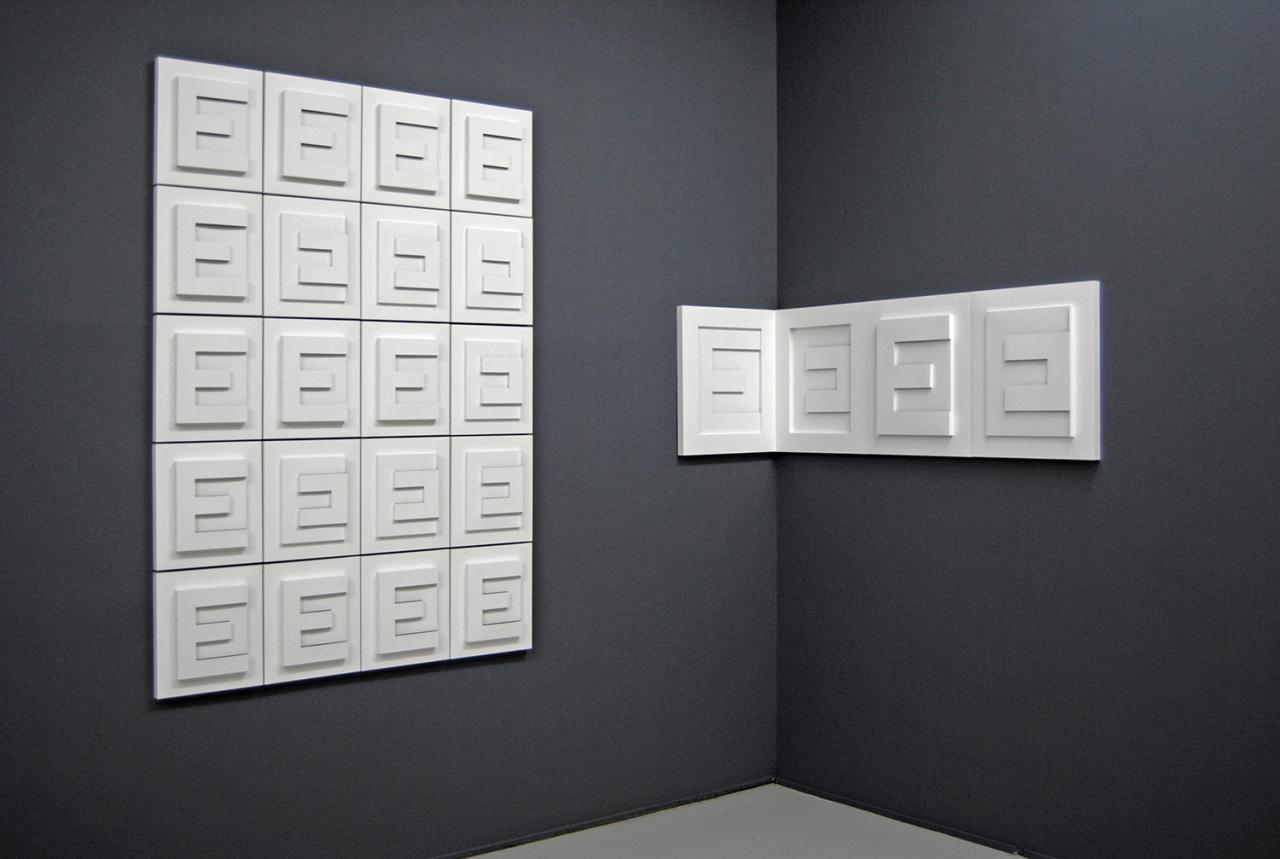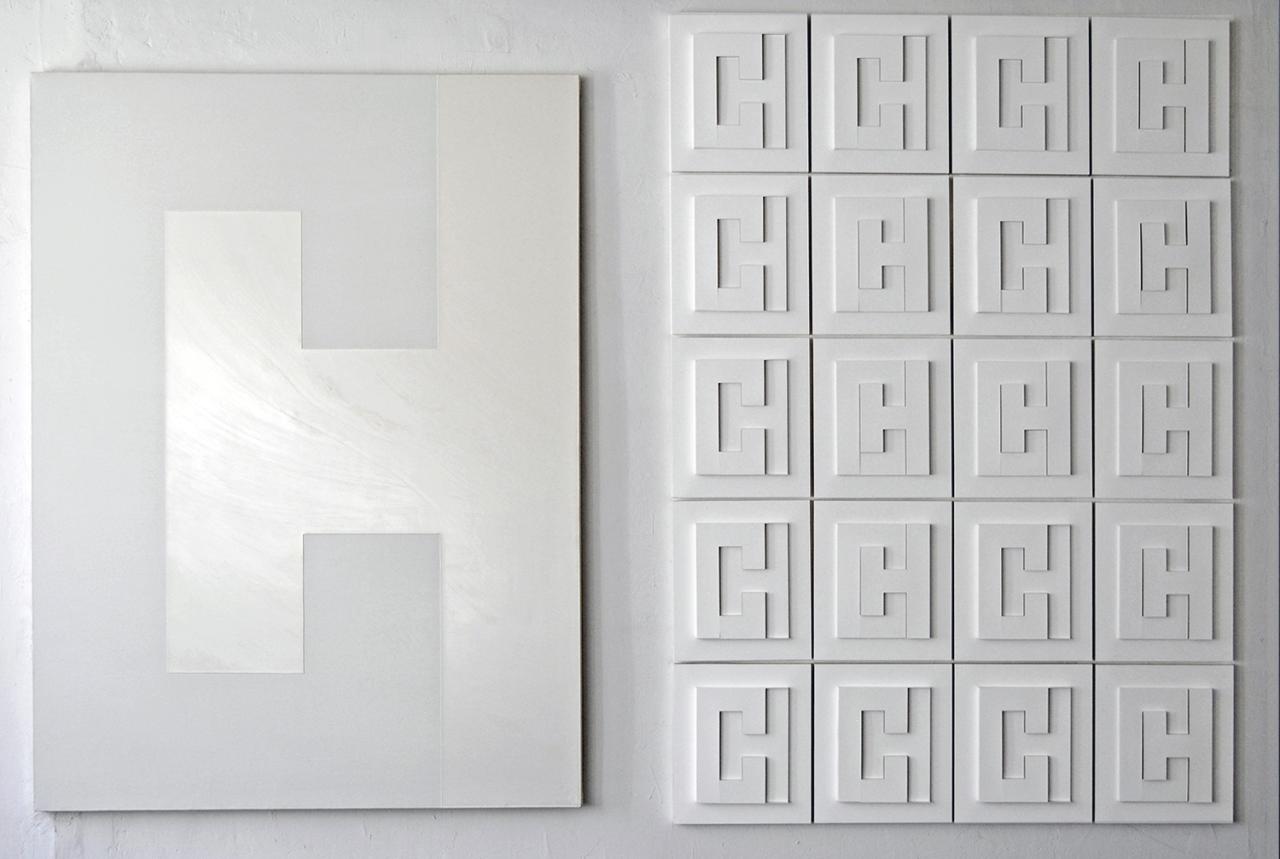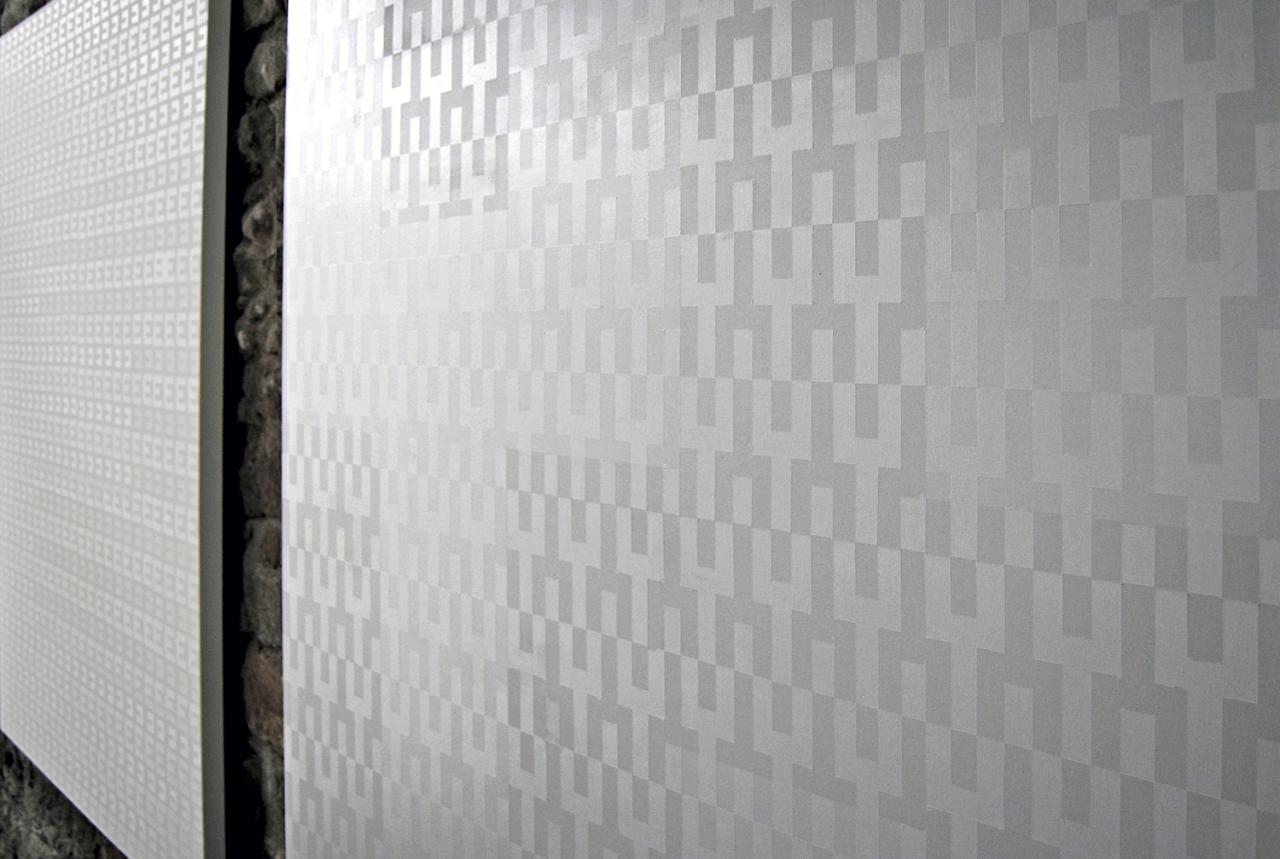A.Stella
Born in 1958
Lives and works in Saint-Etienne




“For the past twenty years or so, I have centred my research on the articulation of two elements, two notions, two complementary processes that function simultaneously in order to create a mechanics of perception.
5 complementary units, “double forms”, were selected.
Over the course of various periods, each development has referred to these five units, in which the “geogram” and “planogram” forms, paintings and paper structures have taken shape.
New formulations came after these — “foldgrams”, “optigrams”, “planoptic”, “foldtych” — up until 2019, when a single unit stood out with the installation Bibliogram.
In 2020, I embarked on a project that consisted in isolating this specific unit and focusing my research on the particularity of this mechanics of perception: its formal purpose, the vertical interlocking of two forms and its horizontal linguistic extension through its complementary.
A body of research entirely devoted to the space of painting.”
A. Stella, 2023
Translated by Lucy Pons, 2024
© Adagp, Paris